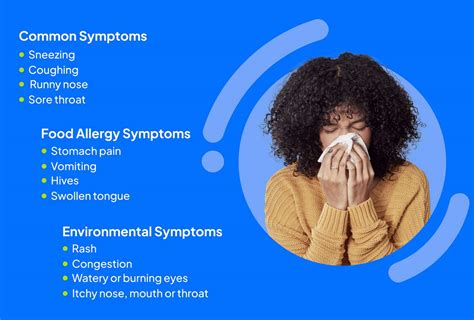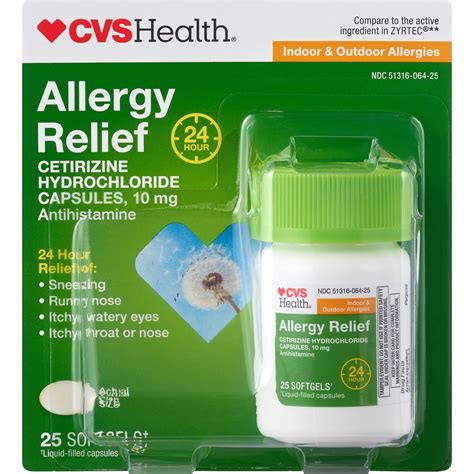Intro
Discover the latest on allergies near you. Learn to identify symptoms, from mild to severe, and explore effective relief options. Get expert advice on managing seasonal allergies, food allergies, and more. Find out whats causing your allergy symptoms and how to alleviate them with our comprehensive guide to allergies today.
Allergies are a common and growing health concern that affects millions of people worldwide. According to the Centers for Disease Control and Prevention (CDC), more than 50 million Americans suffer from allergies each year, resulting in significant economic and social burdens. If you're experiencing allergy symptoms and are searching for relief options near you, this article is here to help. We'll explore the common symptoms of allergies, discuss the different types of allergies, and provide an overview of available relief options.

Understanding Allergy Symptoms
Allergies occur when the body's immune system overreacts to a harmless substance, such as pollen, dust, or certain foods. This overreaction triggers the release of chemical mediators, such as histamine, which cause a range of symptoms. The severity and type of symptoms vary depending on the individual and the specific allergy.
Common symptoms of allergies include:
- Congestion and stuffiness
- Sneezing and runny nose
- Itchy, watery eyes
- Postnasal drip
- Coughing and wheezing
- Skin rashes and hives
- Digestive issues, such as diarrhea or abdominal pain
Types of Allergies
There are several types of allergies, each with distinct symptoms and triggers. Some of the most common types of allergies include:
- Seasonal allergies: triggered by pollen from trees, grasses, and weeds
- Dust mite allergies: triggered by the waste products of dust mites
- Food allergies: triggered by specific foods, such as peanuts, tree nuts, or shellfish
- Insect sting allergies: triggered by the venom from insect stings
- Pet allergies: triggered by the dander and saliva of pets
Relief Options for Allergies
Fortunately, there are many effective relief options available for allergies. These range from over-the-counter medications and nasal sprays to immunotherapy and lifestyle changes.

Medications and Nasal Sprays
Over-the-counter medications, such as antihistamines and decongestants, can provide quick relief from allergy symptoms. Nasal sprays, such as corticosteroids and antihistamines, can also help reduce congestion and inflammation.
- Antihistamines: diphenhydramine (Benadryl) and loratadine (Claritin)
- Decongestants: pseudoephedrine (Sudafed) and phenylephrine (Sudafed PE)
- Corticosteroid nasal sprays: fluticasone (Flonase) and triamcinolone (Nasacort)
- Antihistamine nasal sprays: azelastine (Astelin) and olopatadine (Patanase)
Immunotherapy
Immunotherapy, also known as allergy shots, is a long-term treatment that involves regular injections of small amounts of the allergen. This helps the body build up tolerance to the allergen and reduces symptoms over time.
Lifestyle Changes
Making lifestyle changes can also help alleviate allergy symptoms. These include:
- Avoiding triggers: staying indoors during peak pollen hours, using HEPA filters, and avoiding certain foods
- Keeping a clean home: dusting and vacuuming regularly, washing bedding in hot water
- Using allergy-friendly products: choosing products that are labeled as hypoallergenic or fragrance-free
Finding Relief Near You
If you're experiencing allergy symptoms and are looking for relief options near you, there are several resources available.

Allergists and Healthcare Providers
Consulting with an allergist or healthcare provider is the best way to determine the best course of treatment for your allergies. They can help you develop a personalized treatment plan and recommend local resources for relief.
Online Resources
There are many online resources available that can help you find relief options near you. These include:
- Allergy apps: such as AllergyEats and Pollen.com
- Online directories: such as the American Academy of Allergy, Asthma, and Immunology (AAAAI) and the Asthma and Allergy Foundation of America (AAFA)
Conclusion
Allergies can be a significant burden, but there are many effective relief options available. By understanding your symptoms, exploring different types of allergies, and finding relief options near you, you can take control of your allergies and improve your quality of life.

We hope this article has provided you with valuable information and resources to help you manage your allergies. Remember to consult with a healthcare provider before starting any new treatments or making significant lifestyle changes.
What are the most common allergy symptoms?
+The most common allergy symptoms include congestion and stuffiness, sneezing and runny nose, itchy, watery eyes, postnasal drip, coughing and wheezing, skin rashes and hives, and digestive issues.
What are the different types of allergies?
+The most common types of allergies include seasonal allergies, dust mite allergies, food allergies, insect sting allergies, and pet allergies.
What are some effective relief options for allergies?
+Effective relief options for allergies include over-the-counter medications and nasal sprays, immunotherapy, and lifestyle changes such as avoiding triggers and keeping a clean home.
